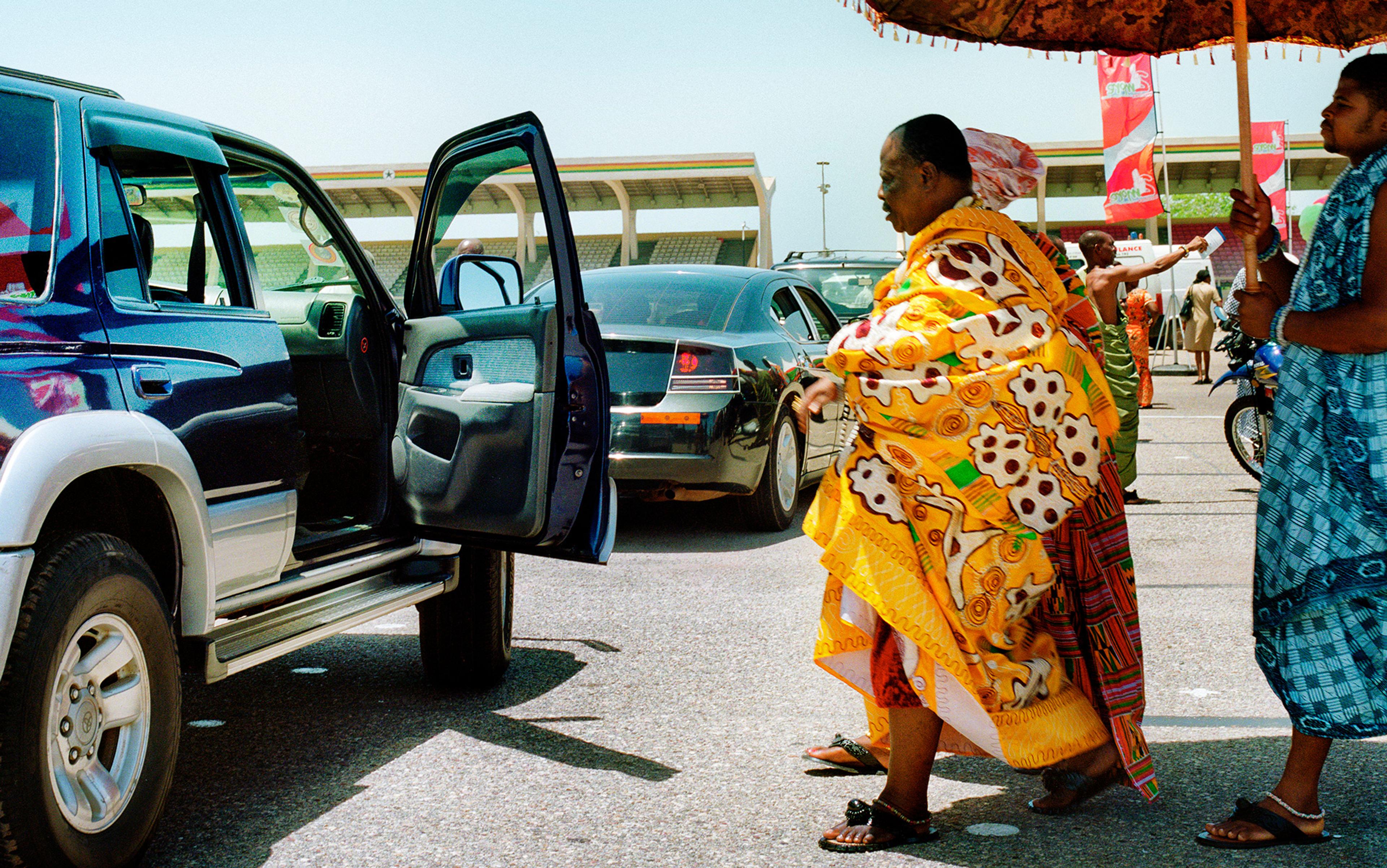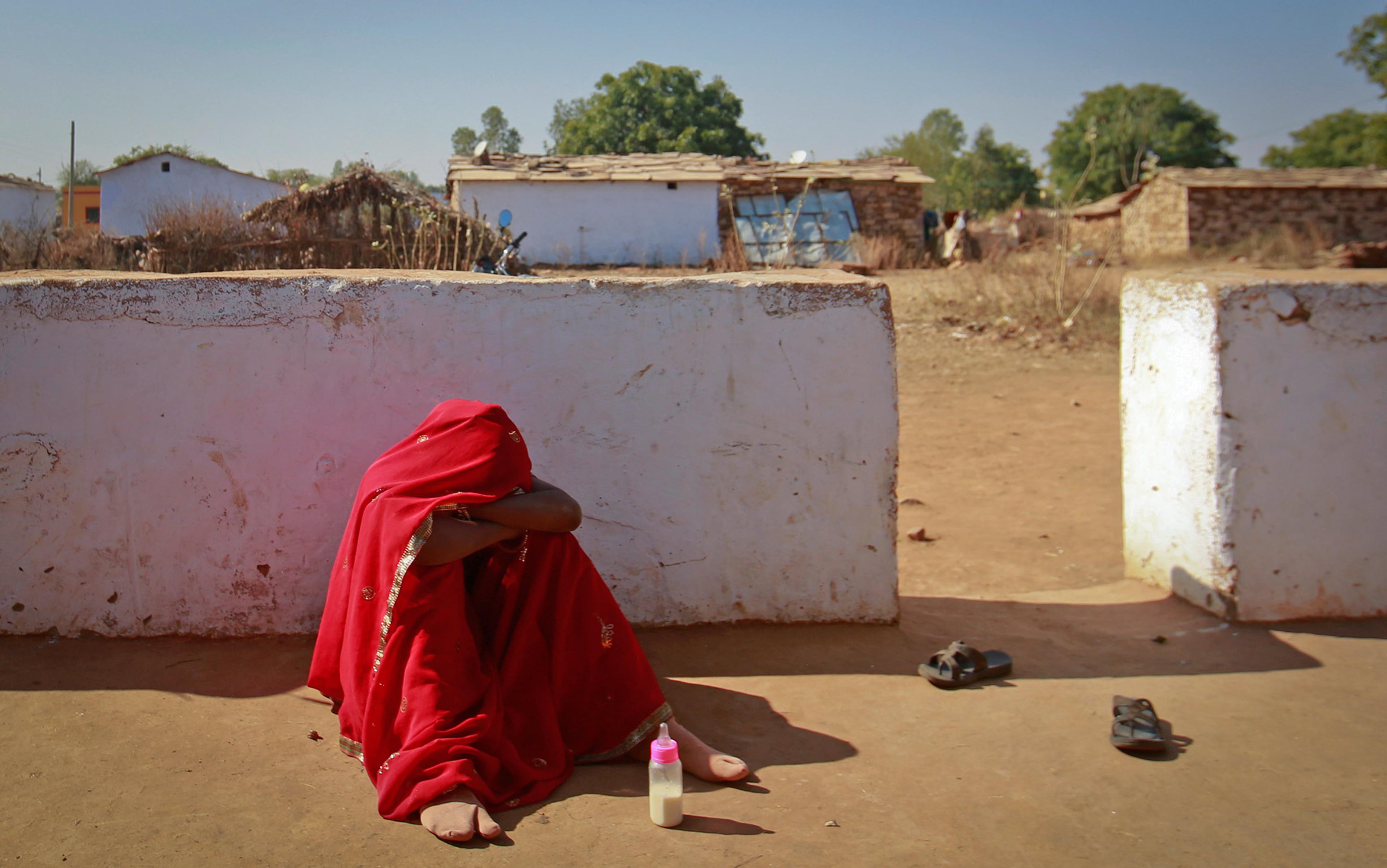We’re both happily married law professors who followed the same trajectory. We graduated from college, became established in our professions, got married, and had children. Our children and most of our friends have followed the same pattern. Our family experiences might be typical of the college-educated professionals around us – but not at all typical for large segments of the American public.
In the middle of the 20th century, during a period of more widely shared prosperity, almost everyone in the United States married. There were some differences. African-American women were a bit more likely to marry and at younger ages than white women, and college graduates were a bit less likely to marry than high-school graduates. But the similarities across class lines were striking. The age of marriage dropped in the generation after the Second World War, across the spectrum. For all Americans, divorce rates and non-marital birth rates were low, children overwhelmingly grew up in two-parent families, and white- and blue-collar couples alike wanted three to four children.
Like marriage age and divorce rates and ideal family size, family law in the post-war decades grew increasingly national. The US Supreme Court insisted that states modernise their treatment of unmarried fathers, women gained more equal rights and, in 1970 with the support of President Richard Nixon, the US Congress voted on a bipartisan basis to fund contraception access. Throughout the US, family life had a certain consistency.
Beginning in the 1990s, things changed. Married Americans still reported rates of marital satisfaction consistent with earlier generations, but fewer got married. The advent of no-fault divorce led to increasing divorce rates in the 1970s and ’80s, but by the 1990s, divorce rates seemed to plateau. At the same time, non-marital birth rates were rising. Much commentary interpreted single motherhood as a matter of individuals making bad choices. When it came to African-American women the discussion often echoed the Moynihan Report, ‘The Negro Family: The Case for National Action’ (1965), in which the ‘tangle of pathology’ and the ‘deterioration of the black family’ was seen as a major obstacle to political and economic equality. Now, the same patterns increasingly characterised white families.
These broad trends in the US family – flat-lined levels of marital satisfaction, plateauing divorce rates, rising non-marital births – have stymied simple understanding. But that is because they cloak a deeper change, the way rising inequality is pushing US families in different directions.
In some sense, ‘the American family’ no longer exists. Economic status is now more important than shared nationality in shaping family structure and choices. The divorce rate, for example, has only plateaued in the aggregate. It has dropped dramatically for college graduates – back to the levels of the mid-1960s before no-fault divorce – while it has continued to rise for everyone else. In 1992, then US Vice-President Dan Quayle precipitated a debate by criticising a television sitcom character, Candice Bergen’s Murphy Brown, for having a child without a husband. From a demographic perspective Quayle’s criticism was off the mark. Professional women such as Murphy Brown were not leading the charge into single parenthood: between 1980 and 2006, the non-marital birth rate for white college graduates barely changed. It did however increase for other women – especially among the white working class.
Apparently steady rates of marital satisfaction also present a misleading picture. In reality, there are diverging patterns between the well-off and the struggling. In 1980, couples experiencing financial distress reported less happy marriages than the financially secure, but the differences were relatively small. By 2000, the differences had increased substantially. Those in financial distress had far less happy marriages, while the marital quality of the economically successful group had improved. The real change in those 20 years was the disappearance of the middle, of the good-enough marriages that weathered bad times. What happened?
In our families, when our children reached their late 20s, weddings from California to Maine filled their summer travels. Their well-educated and mostly liberal friends took marriage seriously. But when we talked to working-class women from rural Kansas, during our research, we heard a different story. One woman we knew, a devout Christian, unmarried and pregnant, bristled when we asked about the father of her baby. She did not want him to have anything further to do with her or the child. In The End of Men: And the Rise of Women (2012), the journalist Hanna Rosin describes a Virginia woman in similar circumstances. She explained that marrying the father of her child meant ‘one less granola bar’ for her and the two-year-old.
This growing divide in the US family can be more divisive than the country’s wars. For nearly two decades, the question of what American families should look like has been a battleground in the country’s increasingly polarised political life. Conservatives have blamed Hollywood, liberals and a decline in cultural values. The libertarian Charles Murray first blamed welfare in Losing Ground: American Social Policy, 1950-1980 (1984) but more recently shifted responsibility to the one per cent: if only the new capitalist elite would emerge from their gated communities to reveal their moral example to working-class degenerates, the right family order could be re‑established.
In The Marriage Problem: How Our Culture Has Weakened Families (2002), the sociologist James Q Wilson attributed the decline in marriage to two causes: the long, slow emancipation of women that began in the Enlightenment, and the erosion of the ‘authority of marriage’: that is, the moral imperatives that a woman should marry before having a child and that a successful man must stand by his ageing wife rather than trade her in for a new model. Wilson characterised these forces as ‘our culture’.
Christian conservatives tend to agree with the cultural view, alleging that a loss of sexual restraint destroys the sacred links between marriage, sexuality and procreation: they recommend bans on abortion, and limiting access to contraception and sex education as remedies for this moral decline.
the only women whose marriage rates didn’t decline are the 10 per cent of women with the highest incomes
Wilson was correct that ‘the long slow emancipation of women’ has increased women’s independence. Women no longer have to marry or stay married to raise children. We think this is a good thing. The adoption of no-fault divorce has helped to produce a thirty per cent reduction in domestic violence and a significant decline in women’s suicide rates. No-fault divorce has made it much easier for women to leave abusive husbands. Or, for that matter, to change an unwanted life as a suburban housewife, such as inspired Betty Friedan’s The Feminine Mystique (1963). But these factors do not explain why the elite’s marriages and families are so different from those of the average American.
If Wilson was correct that marriage has declined because of women’s independence or the values of the secular left, we would expect well-educated professional women to be trendsetters away from marriage. But they are not. Instead, the only women whose marriage rates have not declined are the 10 per cent of women with the highest incomes. These are the most independent women. In contrast, marriage has all but disappeared for women who cannot realistically support a child without assistance. Nor does a decline in religious values provide a compelling explanation for these trends. While couples embedded in a religious community (such as the Mormons in Utah) have marriages that last somewhat longer than those who do not attend church at all (or couples who attend different churches), religious communities have higher divorce rates than secular communities.
Ever since the 1965 Moynihan Report chronicled the decline of marriage in the African-American community, progressives have maintained that the real problem is the lack of jobs, particularly for blue-collar men. Today’s conservatives are increasingly likely to agree that this is part of the problem. Even Murray, in his desire to call out the working class as ‘bums’, relentlessly documents the growing gap in working hours between white- and blue-collar men. Social conservatives have come to routinely include attention to employment as part of any realistic marriage-promotion agenda. Conservatives continue to insist, however, that the decline in marriage rates applies to working, as well as unemployed, working-class men and that something cultural must be in play over and above the economic factors. Could they be right?
For at least a generation, a vibrant and discordant marriage debate has unfolded as though the economic and the cultural change provide two independent, even mutually exclusive causes. But our book Marriage Markets: How Inequality is Remaking the American Family (2014) shows that the cultural and economic factors are deeply interdependent. In essence, rising inequality in the US is helping to produce different cultures of marriage. Family formation is a process with different factors that reinforce each other, sometimes with ironic effects. Consider, for example, the impact of the criminal justice system on a community. James Q Wilson may have written about marriage, but is most famous for his ‘broken windows theory’ which advocated arrests for minor offences. Wilson believes that ridding the community of even minor offenders leads to more law‑abiding citizens on the streets, which in turn deters crime. Wilson saw law-enforcement, much like higher rates of marriage, as essential to fostering stronger and healthier communities. In this view, lower crime and higher marriage rates are classic cases of the whole being greater than the sum of their parts. More marriages, like fewer broken windows, are supposed to be better for the whole community in a way that is greater than whatever sum of happy couples the marriages produce.
Yet the evidence has become compelling that increased incarceration for minor offences disproportionately affects minority communities and has a big impact on family stability, an impact that extends well beyond the understandably lower marriage rates of those in jail. Greater targeting of minor offenses catalyses changes that affect relationship norms in the whole community, and not towards increased marriage rates. Understanding this dynamic gives us some clues about what might be happening to the family more generally.
The immediate effect of increased incarceration is, of course, that there are fewer men in a community. As a matter of simple arithmetic, fewer women will be able to marry. But the effect goes beyond that. As far as women are concerned, men who are at risk of arrest for everything from jaywalking citations to pot possession to murder, are less reliable. As the citations rack up, they become less employable, more subject to further arrests, and more likely to turn to unsavoury companions for income. Women in turn begin to rely more on themselves, for many things. Studies confirm, for instance, that greater male incarceration leads to more female education and employment.
Rather than lower their standards, women are more likely to give up on the men
Proponents of ‘broken windows theory’ argue that the men should simply become more law-abiding. Perhaps some do, but even the law-abiding men in these communities do not become marriage-focused; instead, they too become less likely to marry. Why? In their smart book, Too Many Women?: The Sex Ratio Question (1983), the sociologists Marcia Guttentag and Paul Secord explained that a change in sex ratios – the number of men to women in a community – changes the behaviour of the entire group. When men outnumber women, the men compete for the women. They become more eager to marry because otherwise they might be left out of relationships altogether. To do so, they invest more in the things that will attract women: they work harder, they become more faithful, they can become more law-abiding. The women get to choose. Some will prefer higher-earning men; others might prefer better behaved, or funnier, wittier or more attentive men. These traits will then define the norms in the community.
However, when women outnumber men in a community, something very different happens. As a group, the women do not compete harder for the men. Nor do the men aim for higher-status women, at least not if that means the women might outshine them. Instead, men work less hard, become less faithful, and find that they do not need to treat women as well to be able to find at least a temporary partner. Rather than lower their standards, women respond by becoming more likely to give up on the men. They might sleep with them (they still need them to have children after all), but they invest more in themselves, their own income prospects and their own relatives. In short, they make exactly the decisions that women in the communities affected by mass incarceration policies make.
Guttentag and Secord originally tested their theory by comparing ancient Athens and Sparta. They claimed that Sparta, the militaristic Greek province of the ancient world, practised infanticide on male babies who appeared weak at birth and took the boys off for wars and military service that further reduced their ranks. As a result, they argued, the women of Sparta had reputations for being more liberated, sexually adventurous and wittier than women in Athens or the rest of the ancient world.
Were Guttentag and Secord right? Although historians have questioned their description of Athens and Sparta, sociologists have since done cross-cultural studies validating their broader thesis. Typically, they find that communities where men outnumber women are more marriage-focused, have more productive males, and invest more in their children. In contrast, where the women outnumber the men, the men seem to prefer to play the field, and the women’s standards for an acceptable match increase. As women come to outnumber men, and male behaviour (from a woman’s perspective) becomes less attractive, the women become pickier: they rely more on themselves and less on marriage. Marriage rates decline not just for the women, but for the men as well.
This account of the impact of gender ratios has been enormously influential in the social sciences. Some economists have described it as an economic theory of supply and demand which maintains that as the relative numbers of men and women change, the ‘price’ of marriage changes. But, as sociologists have perceived, it makes more sense as a story of cultural change. As the relative number of men and women in a given community change, so do relationship norms. With more men, women’s preferences for a match with a reliable and faithful man play a greater role in defining relationship terms. With more women, men’s preferences for multiple partners without commitment have greater influence in setting community norms. These factors affect not just the behaviour of individuals, but actually change the expectations and values of the entire group.
In our research for Marriage Markets, we wondered whether such factors might influence changing norms that move in opposite directions for different economic groups. Is it possible that greater inequality has changed the way that men and women match up with each other, placing more men in some marriage markets and more women in others? In theory at least, that would explain marriage norms that change in opposite directions for difference classes. One big obstacle stands in the way of such a theory: the absolute number of men and women in most communities does not differ greatly. However, as we soon realised, the absolute number is not what matters. Instead, the crucial factor is the number of men and women willing to marry each other. A ‘marriage market’, in our conception, depends on who’s available and who’s worth marrying. This was a matter worth investigating.
In 1960, when almost all women were expected to be homemakers if their husbands could support them, men did not care very much about women’s incomes: youth, attractiveness and homemaking skills mattered much more. Indeed, the highest-earning women in that era were among the least likely to marry. Too much female success might have been a turn-off for a marriage-oriented man. Today, as we mentioned earlier, the women who make the most money have seen the greatest increase in their marital prospects. Evolutionary psychologists like to study what men and women find attractive in each other, and these factors do change over time. Perhaps the biggest change over the past half century is that men have come to care more about how much money a woman makes.
At the same time, women have always cared about male incomes, and they seem to care even more today. In studies psychologists conduct with college students in the lab, women rate carefully manipulated pictures of men as more attractive when the man is described as earning more money. In the real world, it is harder to test such preferences so precisely, but women seem pretty clear on one point: large numbers, nearly 80 per cent, report that they will not marry a man without a stable job. If, in a particular community, jobs decline for men, so does the number of men whom women might be prepared to marry. Men also seem to prefer women with jobs, but their insistence on a partner with stable employment is not quite as strong.
‘marriageable’ women outnumber marriageable men by two to one in many urban communities
This idea, that a decline in blue-collar male employment changes the marriage rate, has a long pedigree. The Harvard sociologist Bill Wilson, influenced by the Guttentag and Secord thesis, argued in the 1990s that much of the racial difference in marriage rates could be explained by sex ratios. There are minor sex ratio differences: compared with whites, African Americans have fewer boys, and more African-American males than females die before adulthood. But dramatically more African-American men than whites (or than African-American women) are in prison, and are thus not present in the community. In poor urban areas the percentages are significant. More black men will marry outside the race than black women, further reducing the numbers. And in poor African-American communities, a high percentage of the men have only sporadic employment. Wilson estimated that if the women will marry only men with stable jobs, then ‘marriageable’ women outnumber marriageable men by two to one in many urban communities.
Wilson’s thesis was controversial. The sociologist Christopher Jencks levelled the most significant criticism. Pointing out that marriage rates had fallen almost as much for employed as for unemployed men, he suggested that changes in employment could not account for the decline in marriage. What Jencks missed, however, is that this is exactly what gender-ratio theory would predict: when women outnumber men, marriage rates drop not just for unemployed men but for the entire group.
Today, sex-ratio theory is a significant component of most explanations of why marriage has disappeared in many communities. If there is a dispute, it is likely to be over which factors are most important. Some scholars look at the total number of men and women. More look at employment. In 1960 near the height of the baby boom years when marriage and fertility spiked, there were 139 employed men for every 100 unmarried women. Today, there are 91. The Fragile Families project run by Princeton and Columbia universities, which studies unmarried mothers, has found that once researchers control for gender ratios, much of the racial difference in marriage disappears. Gender ratios affect not just marriages rates in their study populations, but also the quality of non-marital relationships. Women tend to be happier with their current partner when the number of available men in the community rises.
These studies suggest that the way sex ratios change families is by altering the nature of marriage ‘markets’ as a whole. As the likelihood that a woman will find the ‘right’ man declines, the women come to expect less from men generally. And while men enjoy the ability to enter into more relationships, they respond to women’s greater suspicions by becoming even less willing to commit. The result produces a reinforcing cycle of distrust. The results from these studies are so robust that, in their book Premarital Sex in America (2011), the sociologists Mark Regnerus and Jeremy Uecker maintain that even the hook-up culture on college campuses might be explained by a lack of men. Their charts show a straight line relationship between the gender ratio on campus and the likelihood that a woman who remains a virgin has a steady boyfriend. Sex ratios, it turns out, also affect the price of sex.
This research has greatly enriched our understanding of the relationship between the economy and declining marriage rates for those on the losing end of changes in the US economy. But what about the winners? Can changing sex ratios also explain the continuing marriage orientation of those at the top of the US economy? The short answer is that almost no one studies marriage among the successful. Charles Murray, who documents and celebrates the virtues of the successful, simply assumes that they demonstrate continuing commitment to industriousness, piety and a lack of criminality.
What we do know is that the men at the top (and only the top) have outpaced the women financially. Top executives and the financial sector account for 58 per cent of the income growth at the top. These executives are overwhelming male. Indeed, the six job categories with the greatest differences in pay between men and women are in finance, and the number of women employed on Wall Street dropped after 2000. Overall, women have done well and the gap between men and women’s incomes has narrowed since 1990. But these changes have come overwhelmingly at the middle and bottom of the economic ladder. At the top, the wage gap has grown, and it has grown for college graduates as a whole, looking at median figures. Controlling for specialisms, hours worked, education and other factors, the most significant growth in gender disparities occurs above the 90th percentile.
What does this mean for marriage? We think it answers the questions of why we have different groups moving in different directions at the same time. Greater inequality has changed how men and women match up with each other. At the top, men and women marry later and they overwhelmingly marry each other. In the Mad Men days of the 1960s, executives married their secretaries; today, they marry fellow executives and they do so at much later ages than the rest of the population. Only in this group have men’s fortunes increased more than women’s since 1990. If we think of successful men as eager to find partners who share in their ambitions, these men face a smaller pool of similarly successful women.
The secret to the relationship between inequality and the family therefore lies in its effects on the status of men. Men occupy the very top of the economy, and those who sit there are eager to marry from a smaller group of similarly successful and well-educated women. Men are also disproportionately at the bottom and here they are effectively unmarriageable. This leaves a large group of women in the middle, with fewer comparable mates. Inequality makes these divisions starker than they were in other eras and it creates cultural divisions that reinforce each other. In short, inequality has remade marriage markets, making matrimony very attractive for some and a really bad deal for others.
Just why does it matter that we have different cultures of marriage and family structure among different classes? Beyond the erosion of a national narrative of family, class-based family structures have a profound effect on the life chances of children. Class-based differences now eclipse racial differences in predicting the educational performance of the next generation. The class gaps in children’s cognitive achievements, college attendance, civic engagement, athletic participation, and feelings of isolation and loneliness have grown. And this threatens not just children on the bottom, not even just their families, but all Americans.






